After years of looking for American Avocets, I expect to see Black-necked Stilts wherever we find Avocets. Black-necked Stilts and Avocets are similar in many ways, including their diets. Both species are omnivores, eating small fish, insects, and crustaceans. Both feed on the Brine Shrimp found in the Great Salt Lake.
I’ll admit, though, I was still surprised to find a Black-necked Stilt nest less than a hundred yards away from the Avocet nest we had just seen.
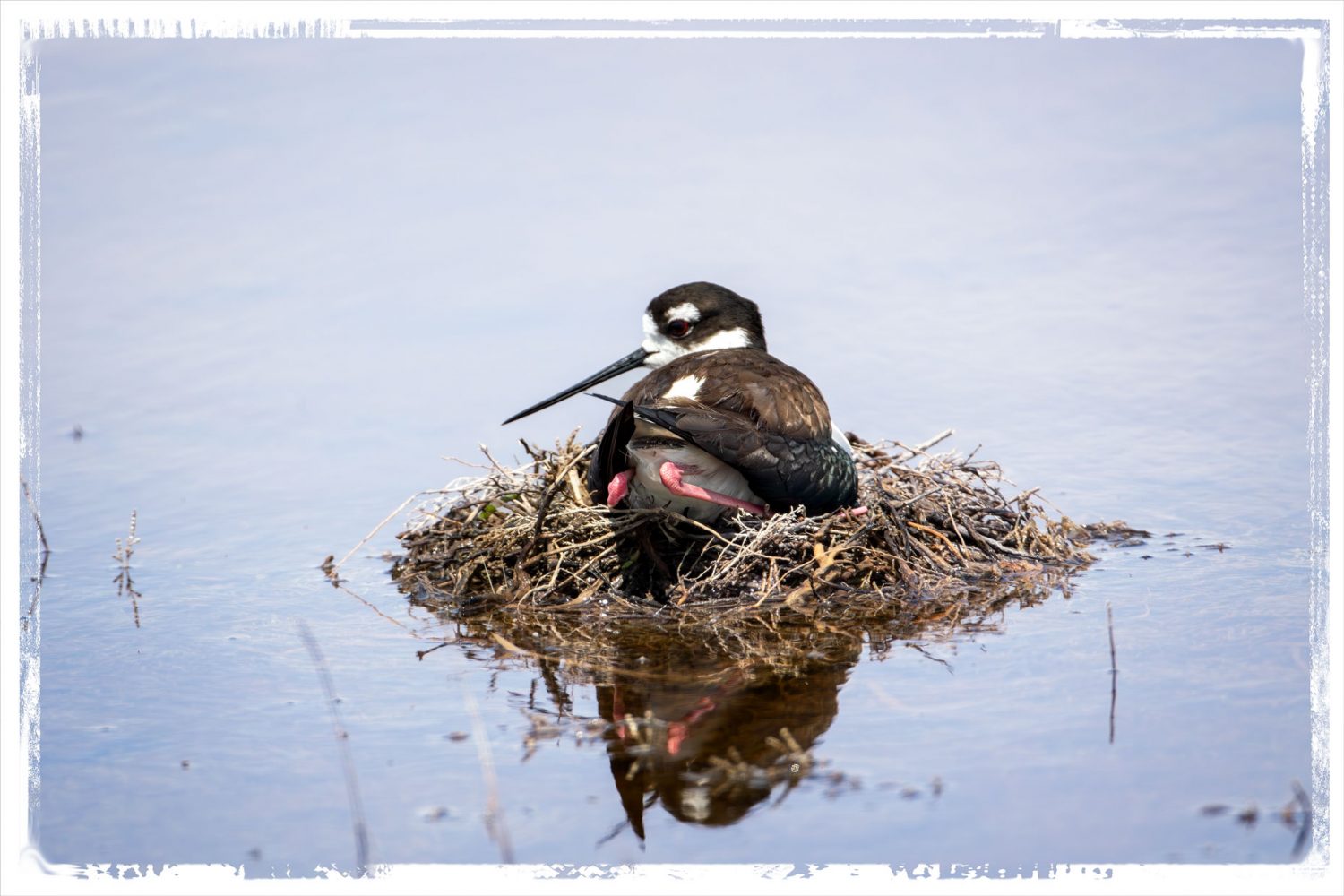
This is the first time I can remember ever seeing a Black-necked Stilt nest (but that might be because my memory isn’t quite as good as it used to be because the post-generated link clearly shows a Black-necked Stilt nest.
Although we saw large flocks of stilts on the way to the refuge, most of the stilts on the sanctuary were either in pairs or were feeding alone.
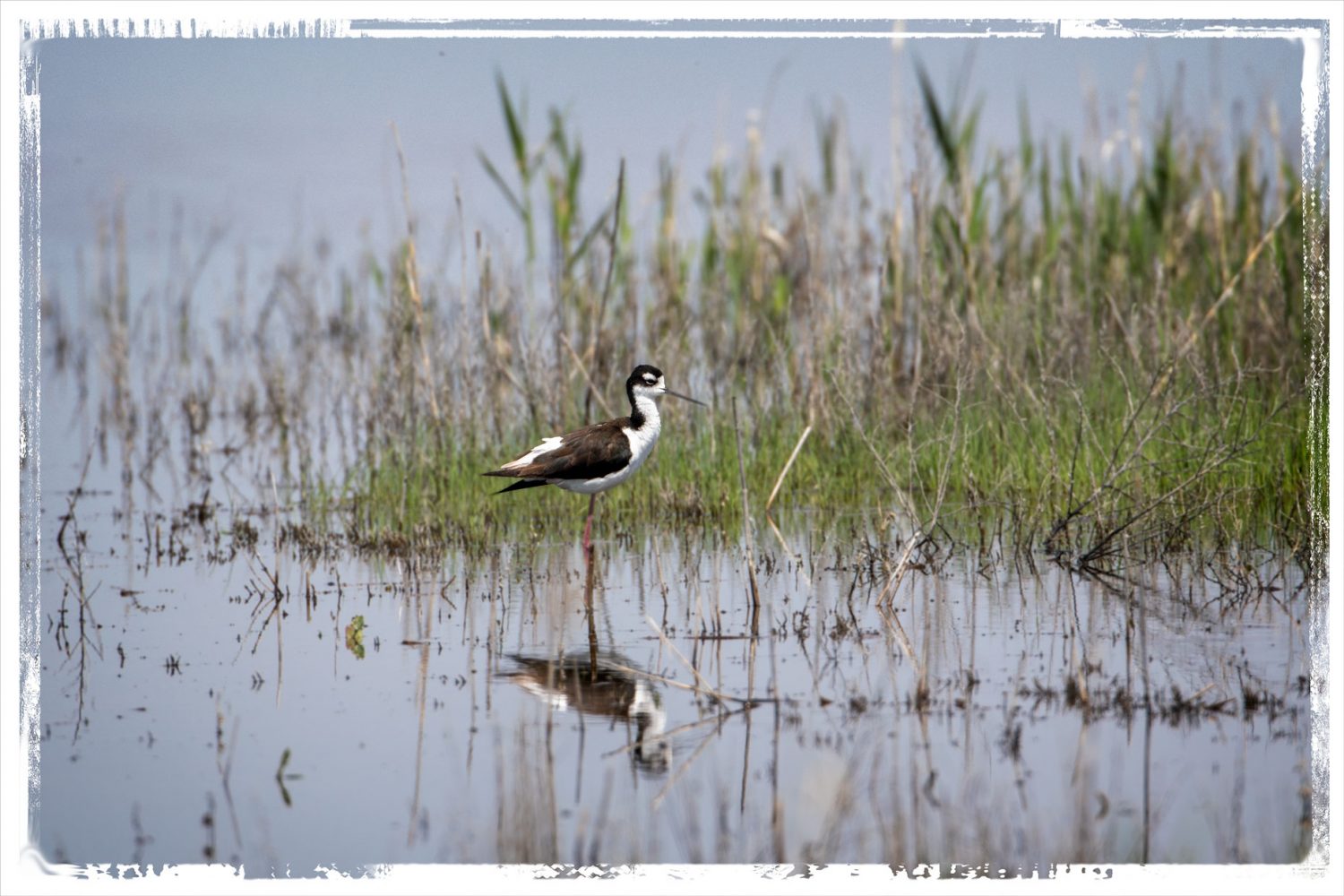
Strangely, American Avocets and Black-necked Stilts seem to get along quite well when feeding together, sometimes quite close together. Black-necked Stilts, on the other hand, seem less tolerant of fellow stilts when feeding. They tend to be territorial, particularly during breeding season, and these two seemed more combative than most.
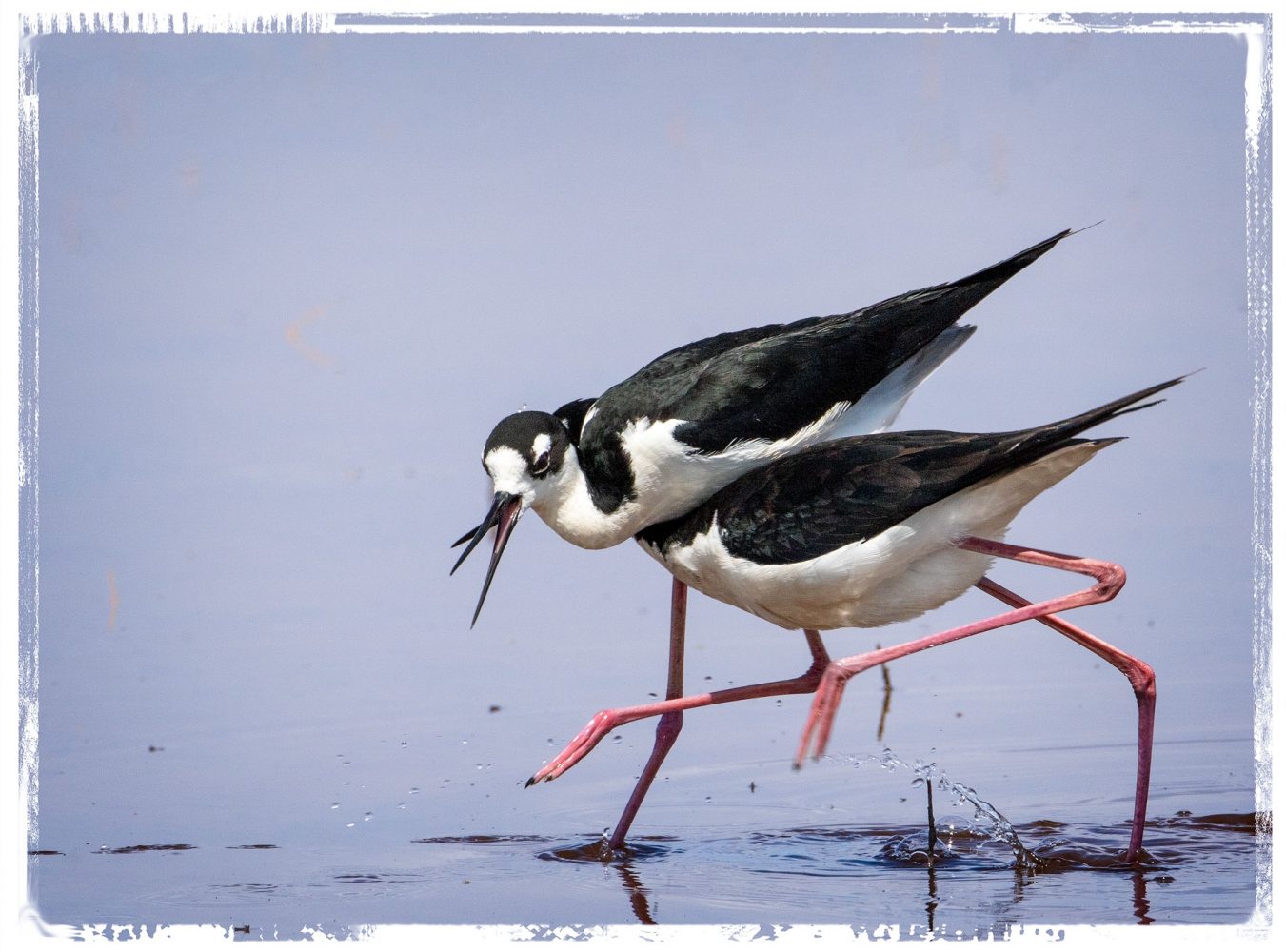
Neither bird seemed to be injured, and it gave me a chance to capture the loser as it flew a safe distance away.
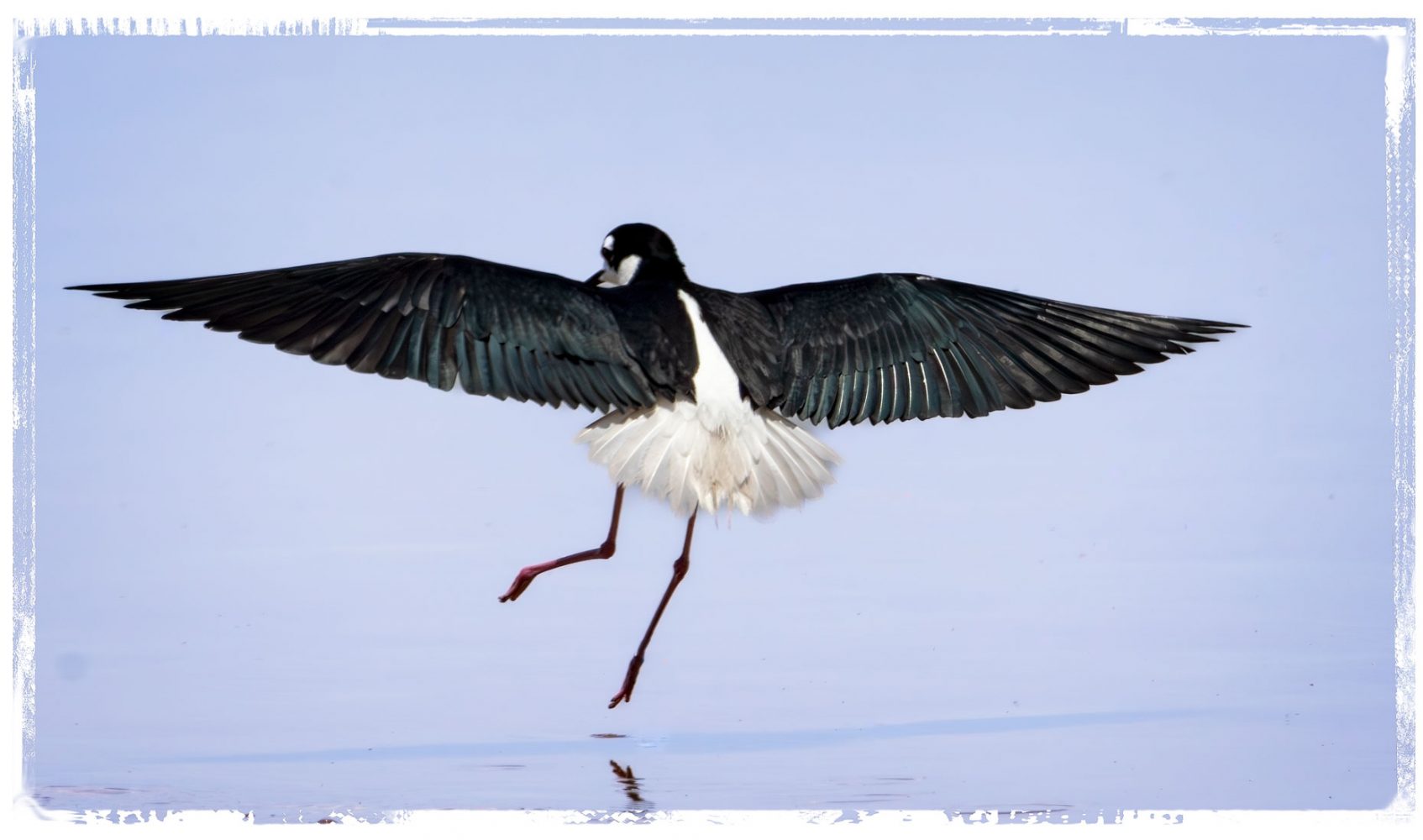
We managed to get closer to these birds than we ever have before,
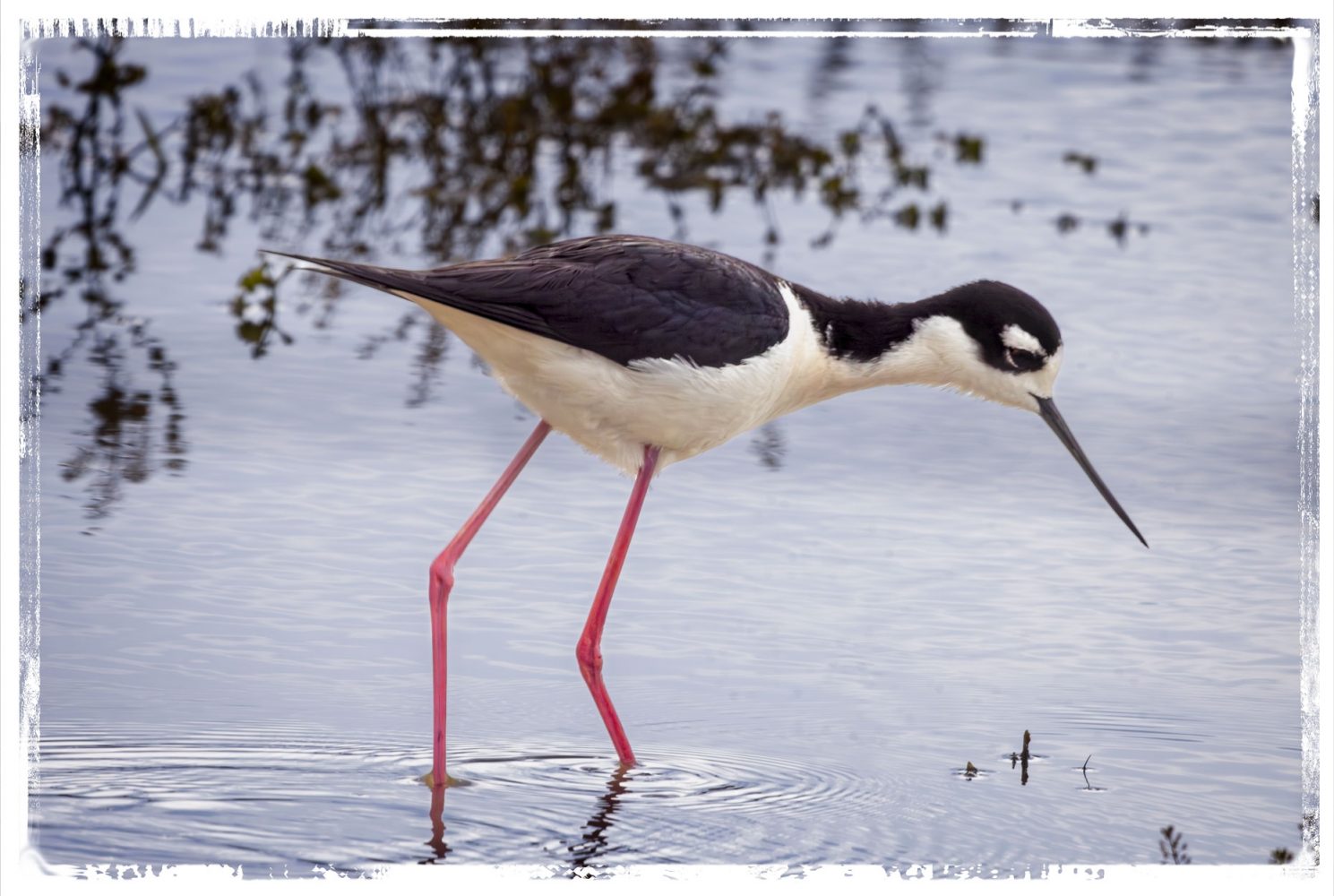
and what really stood out to me were those bright reddish-orange legs, particularly how long they appeared compared to the bird’s overall size. When I asked Bard about those legs it came up with:
The black-necked stilt is a shorebird with long, thin legs that are proportionally longer than those of any other bird. The legs of a black-necked stilt are about 1.5 times the length of its body, and they can reach up to 2 feet (60 centimeters) in length. The legs are pink or reddish in color, and they help the stilt to wade in shallow water and reach for prey.
The stilt’s long legs are an adaptation to its habitat. Black-necked stilts live in wetlands, where they feed on small insects, crustaceans, and other aquatic animals. The long legs allow the stilt to stand in shallow water without sinking, and they also help the stilt to reach prey that is hidden in the mud.
The long legs of the black-necked stilt are also a disadvantage in some ways. The stilt is vulnerable to predators that can reach it from above, and the long legs make it difficult for the stilt to take off and land. However, the stilt’s long legs are an essential part of its survival, and they allow the stilt to live in a variety of wetland habitats.
Here are some other interesting facts about the black-necked stilt’s legs:
The stilt’s legs are made up of hollow bones, which helps to reduce their weight.
The stilt’s legs have a network of blood vessels that help to keep them warm.
The stilt’s legs are covered in scales, which help to protect them from the elements.
The black-necked stilt is a fascinating bird with some amazing adaptations. Its long, thin legs are a key part of its survival, and they help the stilt to live in a variety of wetland habitats.
Most importantly, though, they make the stilt look like a Tai Chi master or ballet dancer, complementing their delicate beauty.
